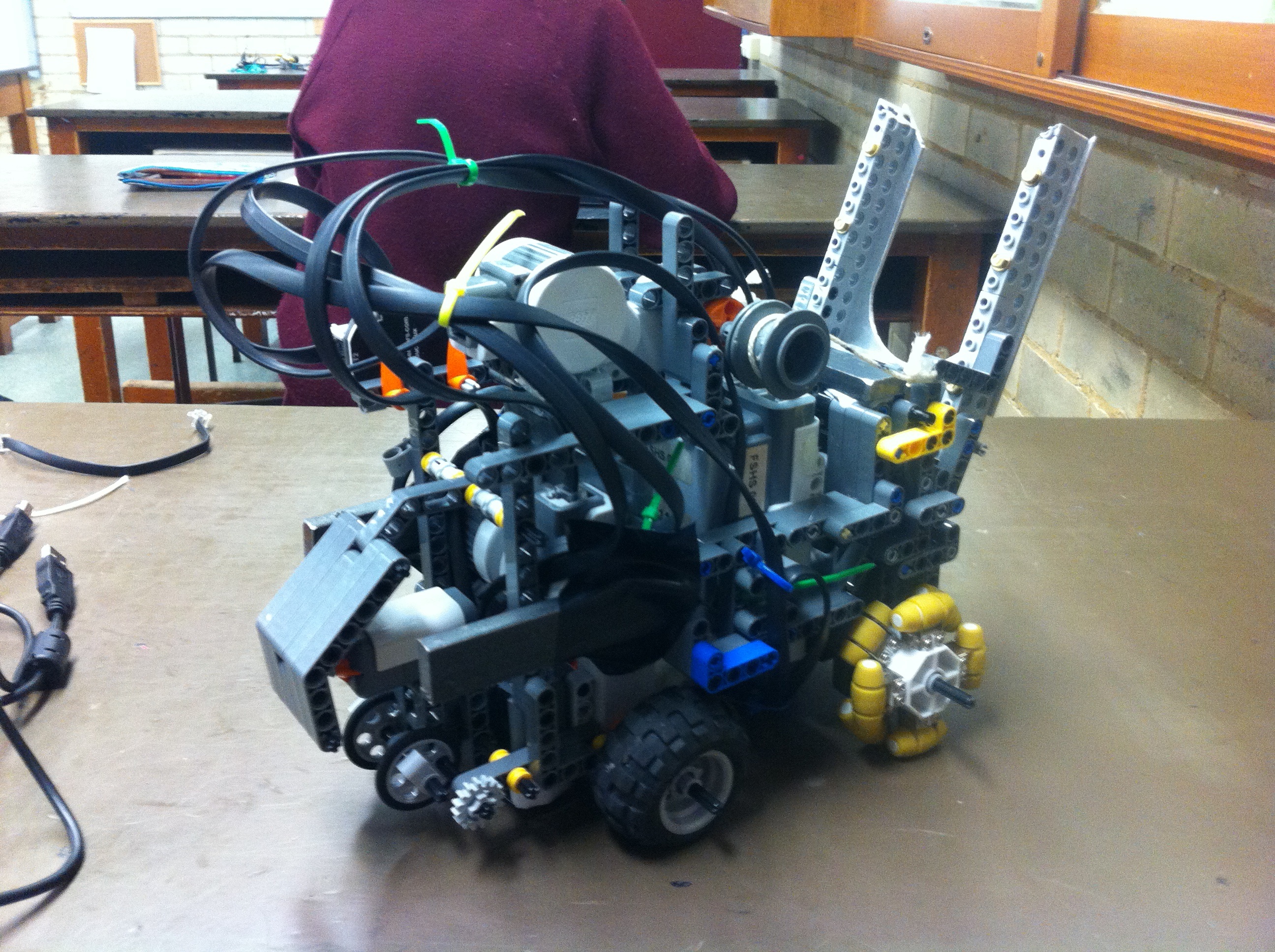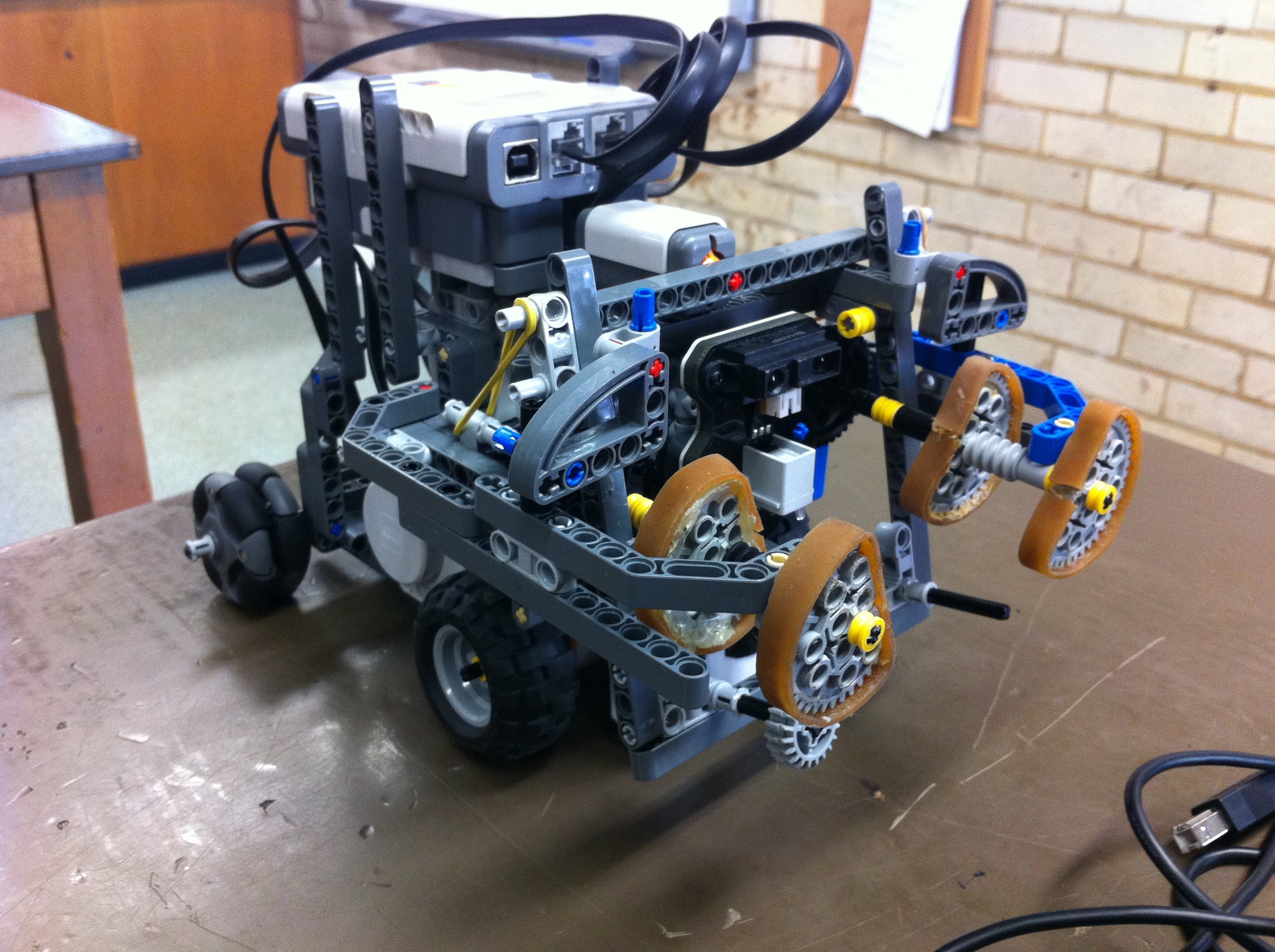© Fort Street High School Robotics
Tips for Line Follow
- Wrap your colour sensors with paper that nearly touches the ground.
- Make sure your wheels are relatively close to and behind your colour sensors.
- Making the wheels really wide will make your robot turn more suddenly - which is not something you want.
- Having your colour sensors too far from the wheels will mean your robot reacts too fast.
- Having your colour sensors after the wheels means you react too late.
- Keep your colour sensors as close as you can, and consistent as you can.
- This makes your movements less erratic.
- The colour sensors should float on top, independent of the robot chassis. If the sensors can slide up and down, you will have generally consistent readings.
Tips for Obstacles
- Detecting the water tower using a touch sensor is more reliable - if there is space, use a touch sensor.
- Make sure your robot does not get stuck on ramps, speed bumps or seesaws. Whenever you change your robot, check that it works on these tricky tiles.
- Make sure your centre of gravity for the robot is over your driving wheels when climbing up and down slopes.
Tips for Spill
- Your sonar needs to be low enough to detect cans and the final platform. Or, if you can find space for a camera and coders are up to the challenge, you can use a Pixy or NXTCam to detect coloured objects.
- If you run out of sensor connections, you can use a sensor splitter, but this may take some more time to get working.
- Pickup mechanism tips
- There are many ways to do it, take a look at this playlist for some ideas, as well as our sample logbooks.
Some FSHS designs
- Some good designs are shown here: http://www.clubengineer.org/build-instructions/#OREV3



More in the logbook samples.